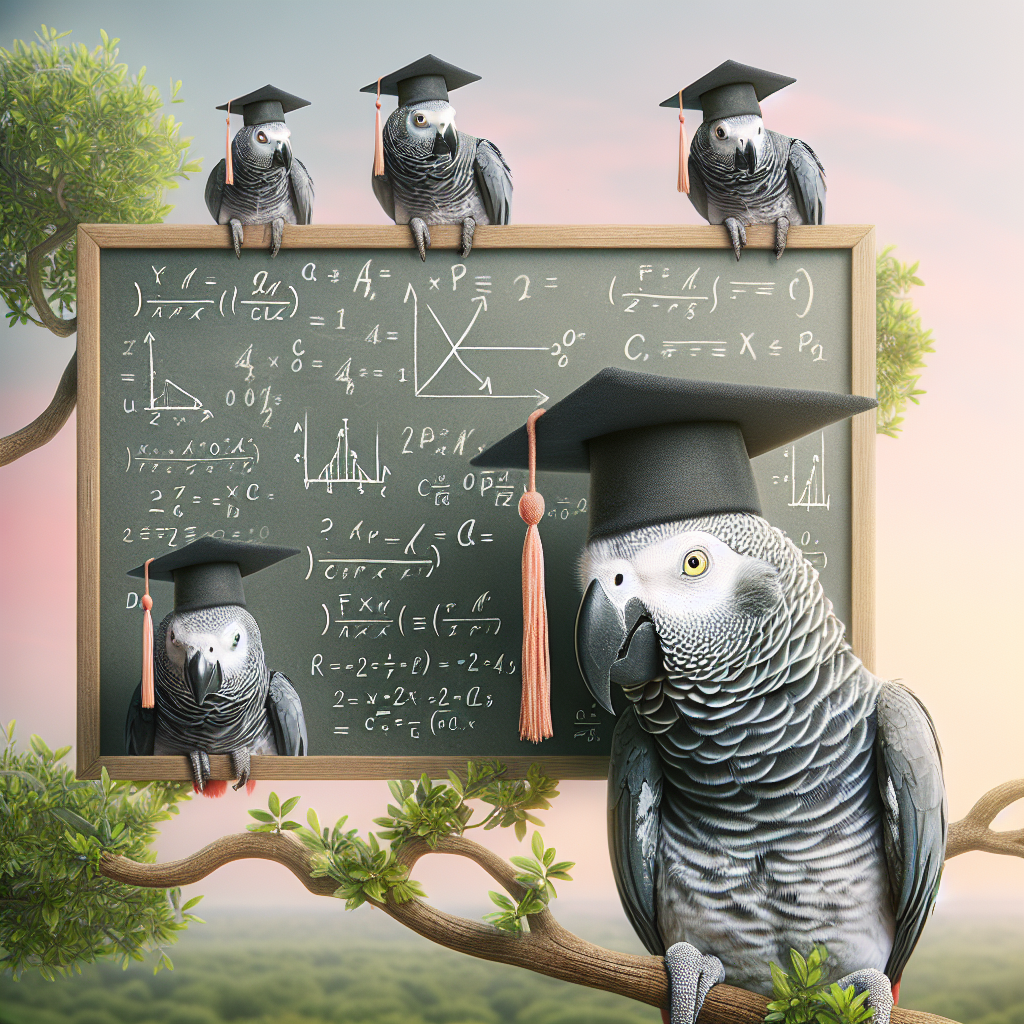The animal kingdom is filled with extraordinary displays of intelligence, but few creatures rival the remarkable cognitive abilities of African grey parrots. Known for their captivating plumage and striking vocal skills, these birds are not just charming companions; they exhibit problem-solving skills that often perplex their human observers. Recent studies have shed light on the complex mental processes of these avian wonders, earning them a place in the upper echelons of animal intelligence, often affectionately referred to as “Feathered PhDs.”
Understanding the African Grey Parrot
The African grey parrot (Psittacus erithacus) is native to the rainforests of West and Central Africa. With striking grey feathers, a vibrant red tail, and an incredibly adept ability to mimic human speech and other sounds, these birds have fascinated pet owners and researchers alike. However, their aesthetic appeal is only the beginning of their remarkable capabilities.
Social creatures by nature, African greys live in flocks and rely on intricate communication skills to navigate their social structures. Their intelligence is often attributed to their social upbringing, which fosters essential cognitive skills such as problem-solving, creativity, and even emotional intelligence.
Problem-Solving Skills
Recent studies have shown that African grey parrots possess advanced problem-solving abilities comparable to those found in 4- to 6-year-old human children. Researchers have conducted various experiments to assess their intelligence, revealing a range of cognitive skills, from tool use to complex social interactions.
Tool Use and Manipulation
One of the most striking aspects of African grey parrots’ problem-solving skills is their ability to use and manipulate tools. In experimental settings, these birds have been observed crafting tools from leaves and sticks to extract food from hard-to-reach places. They demonstrate a level of foresight, planning, and flexibility that is unprecedented in many species. For instance, researchers set up tasks that required parrots to use specific objects to retrieve a reward. The birds showcased an understanding of cause and effect, making them adept at solving puzzles that stumped other species.
Social Learning and Communication
African grey parrots are exceptional at learning from their environment and peers, a process known as social learning. This ability allows them to observe the actions of other birds or humans and adapt those behaviors to solve problems in their own context. For instance, when a parrot watches its owner performing a task, such as opening a container, it may replicate the action or find an innovative workaround to achieve the same result.
Their communication skills further enhance their problem-solving capacity. African greys can vocalize requests and needs, often using words or phrases they’ve learned in context. This dynamic interaction with their environment allows them to gather information and strategize effectively, making them resourceful problem solvers.
Emotional Intelligence
Beyond their intellectual capabilities, African greys demonstrate a high level of emotional intelligence. They can read the emotions of humans and other parrots, adjusting their behavior based on the emotional climate around them. This adaptability aids in problem-solving by allowing the birds to navigate complex social situations and cooperate with others for mutual benefit. For example, a parrot may recognize when a companion is distressed and engage in comforting behaviors to alleviate stress, thereby strengthening social bonds that can be advantageous when faced with challenges.
Implications of Their Intelligence
The intelligence of African grey parrots carries significant implications for our understanding of animal cognition. Their problem-solving skills challenge conventional beliefs about the hierarchy of intelligence in the animal kingdom. As more research unfolds, it becomes increasingly clear that intelligence is not solely the domain of primates or humans.
Understanding the cognitive abilities of African greys opens doors for better care and enrichment in captivity. Owners and caregivers can implement more engaging activities that stimulate their mental faculties, fostering an environment where these birds can thrive. Educators and conservationists may also leverage this newfound knowledge to promote empathy and respect for these intelligent beings, shaping conservation efforts that consider their complex social and cognitive needs.
Conclusion
African grey parrots are remarkable creatures whose impressive problem-solving abilities have earned them an honorary title of “Feathered PhDs.” Through their tool use, social learning, and emotional intelligence, they continue to captivate and inspire those who study them. As we delve deeper into their cognitive processes, we not only gain insights into their world but also reflect on the intricate web of intelligence woven throughout the animal kingdom. In recognizing the capabilities of African grey parrots, we celebrate the beauty of diverse expressions of intelligence, urging humanity to cherish and protect these extraordinary beings in our shared environment.
